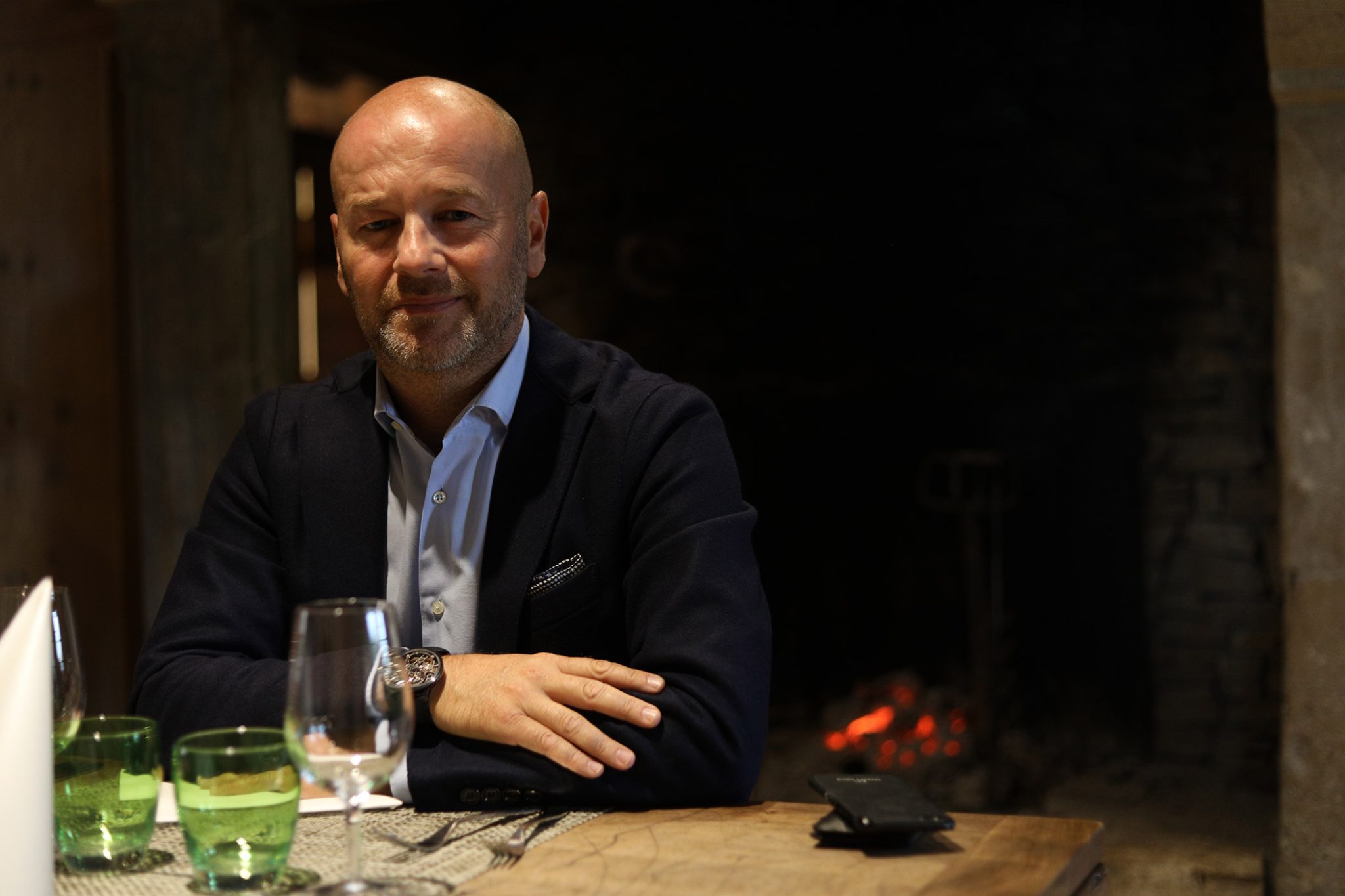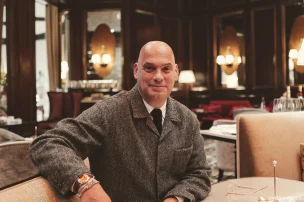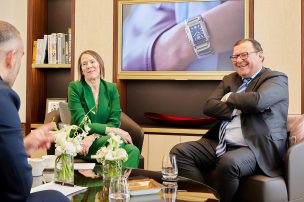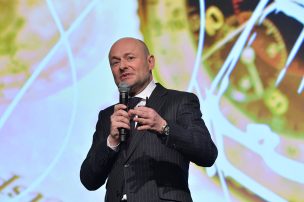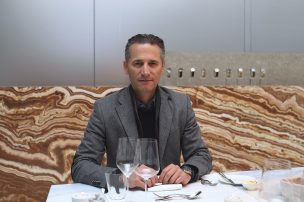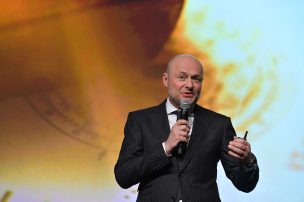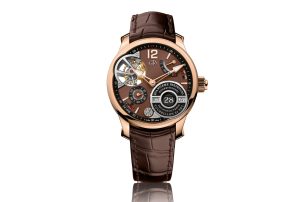
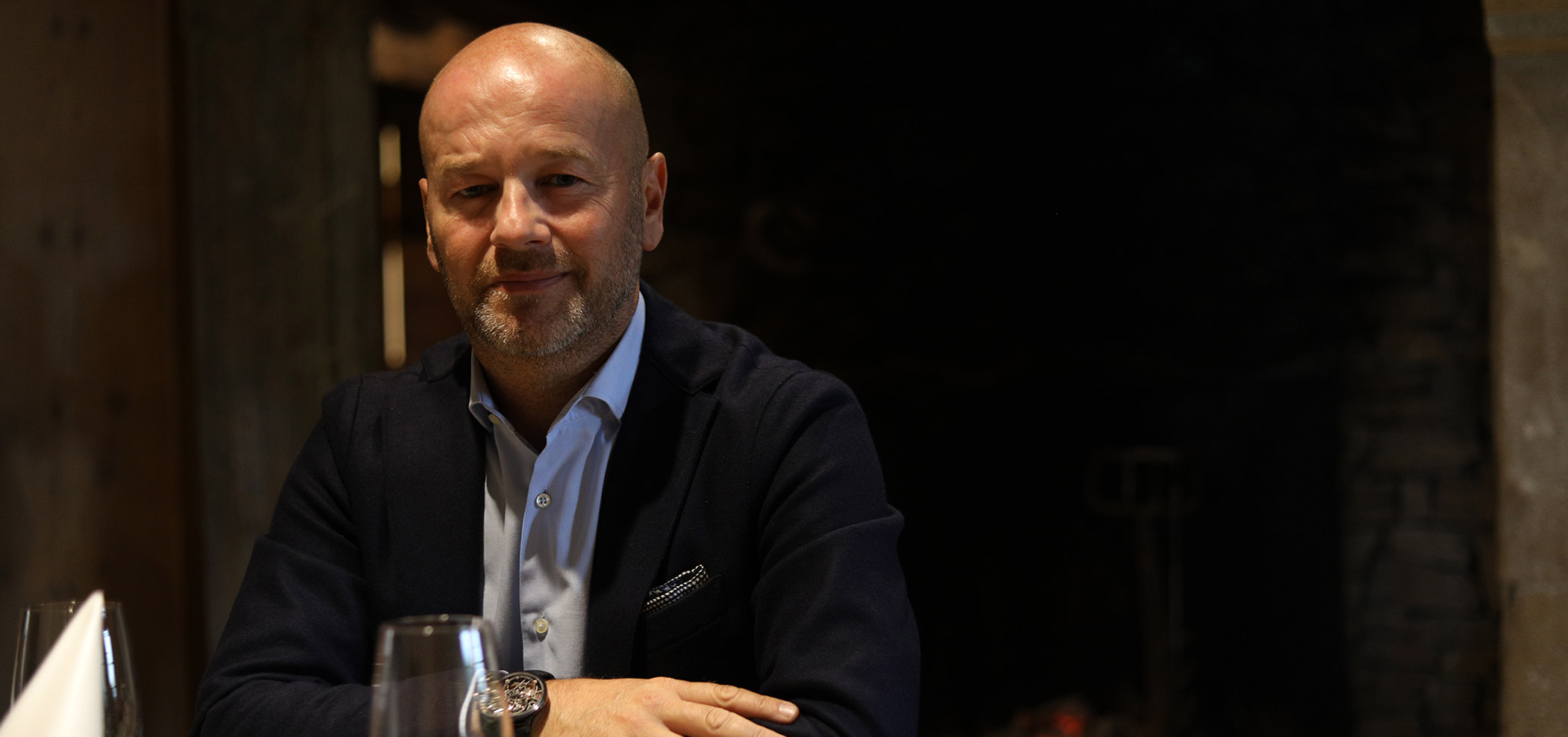
Lunch with: Jaquet Droz CEO Christian Lattmann
Jaquet Droz is all about emotions. Almost 300 years ago, Pierre Jaquet-Droz already knew how to excite people around the world, from France to China, with his snuff boxes, pocket watches and automata. Today, it’s up to Christian Lattmann and his team to respectfully maintain the horology house’s heritage. However, it was Nicolas G. Hayek who first noted the CEO’s business skills and potential, as well as his human values. Lattmann’s sincerity and positive corporate culture are reflected in the nimble hands of his craftspeople, as well as his timepieces and automata. They are able to display surreal 3D animations and chirping birds from your wrist at the flick of a switch. And as emotions are difficult to control, it is not surprising that most of their clients tend to own more than just one Jacquet Droz watch. This is why our conversation with Christian Lattmann is far less about hard facts and figures, and much more about beauty, passion and emotions.
1. What does a mechanical watch mean to you, which watch are you wearing today and which one do you wear the most?
A mechanical watch for me means beauty and passion. Beauty, because it is a jewel. Beauty is very important and gives a meaning to our life. It embodies a spirit, and you can express a certain message and style with a watch. And passion, simply because it’s made by a human, by hand, with patience, expertise and passion, which I share with my team to create new mechanical watches that go on to give pleasure to our customers.
Today, I am wearing the Grande Seconde Skelet-One, a novelty from 2018 – it’s quite modern, yet still respects the style of the Grande Seconde. We wanted to have a skeletonised watch in our collection, yet still preserve the heritage of the brand.
The Skelet-One turned out to be a huge success. While with most of our timepieces, we follow the idea of a famous sentence by Antoine de Saint-Exupery, “What is essential is invisible to the eye”, here we chose to reveal the whole mechanism for the first time.
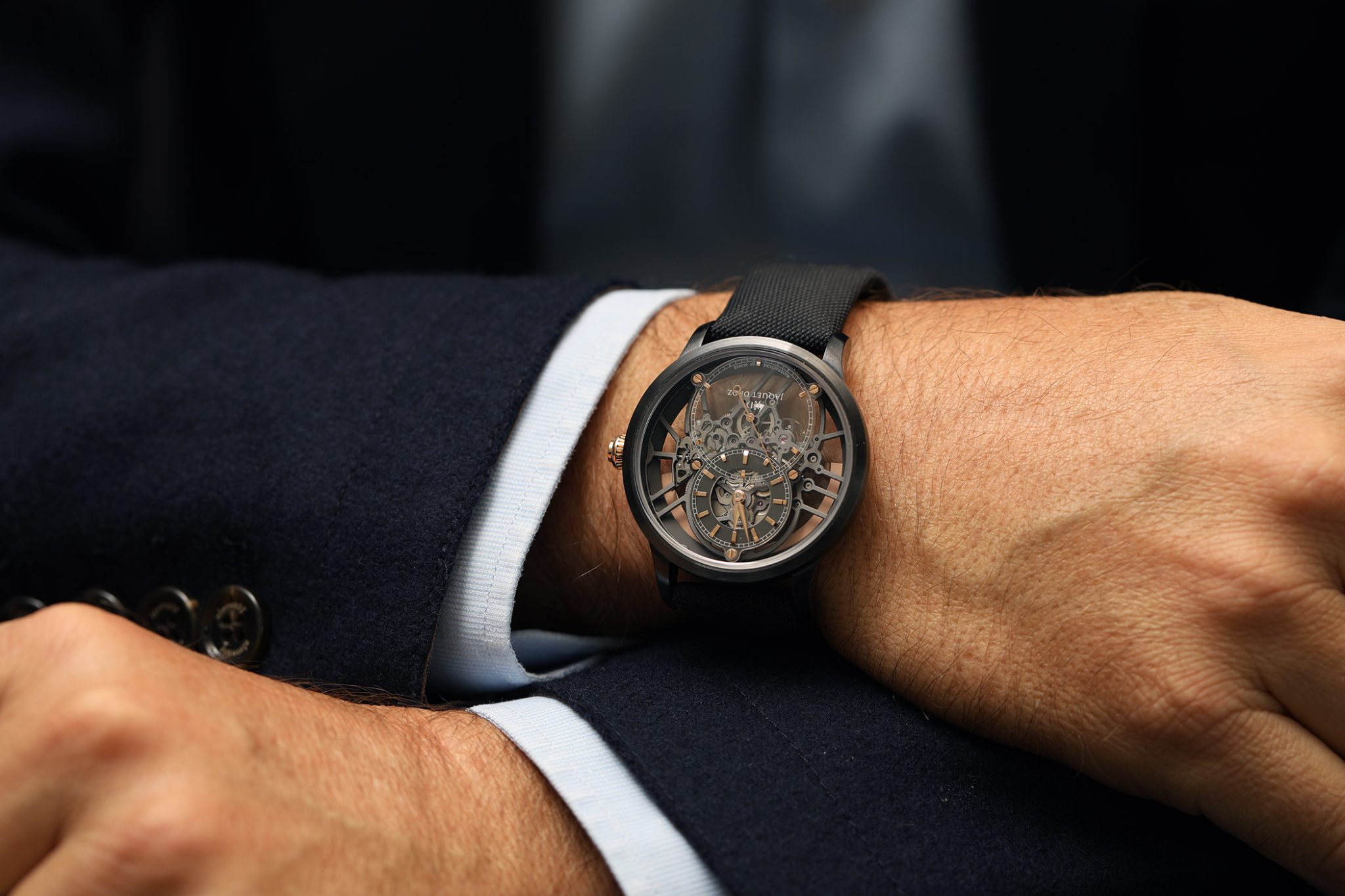
At the moment, I prefer wearing the Skelet-One. It has a 41 mm case and is very comfortable to wear. However, I sometimes switch to the Grande Seconde Moon, which is very eye-catching. That said, during holidays, when by the sea, I don’t wear a Jaquet Droz, but a Swatch Sistem51. (Laughs)
2. You have been working for the Swatch Group since 1989. What was your first encounter with Nicolas G. Hayek like?
I was working at OMEGA as a product manager. One day, I received a phone call from the secretary of Mr. Hayek that he wants to speak to me. In the afternoon I came to his office. He was holding my CV in his hands and said; “I am looking for a guy just like you for Breguet.” That was in 2002 – just two years after the Swatch Group has acquired and revived the brand Jaquet Droz. Mr. Hayek always used to say; “Remember, this is a unique experience and real chance that you are having now.” It took me some years to really understand what he meant.
3. Ever since 2016, you have been CEO of Jaquet Droz. What is the key message that you want to share about this very traditional brand?
As Mr. Nick Hayek said, Jaquet Droz is a real jewel, and in the future not only connoisseurs must know about it, but also the general public. They too must discover its unique history, excellence, creativity and the beauty of its products.
4. Looking at Jaquet Droz watches, especially the Automata and pieces from the Ateliers d’Art, one might ask: are your clients more technically adept or pure aesthetes?
Our clients are attracted by the emotion which come from our watches. Our watches don’t only tell time, they tell a story. I would not limit it to a certain group of people. It can be anyone who gets attracted to our pieces of art. We like the word ‘astonishment’, because this is really what our work does to people. It is pure emotion. And emotion you cannot control. This is what we are looking for. Therefore, most of our clients have more than one Jaquet Droz watch. I was in Tokyo last year and a collector from Osaka took the plane just to be part of the exhibition. Overall, our clients are very self-confident and don’t want to follow others. They want to be different.
5. Does the production of your Automata require special craftsmanship and artisans? Where and how do you recruit such specialists?
We have high watchmakers, miniature painters, engravers and sculptors and we train them ourselves. They don’t need to bring a huge amount of experience as they will learn everything from us. But it is important that after they are finished with their training, they actually stay with us. And the culture of our brand is to make them understand that they are not machines but entrepreneurs. We don’t limit them in their creativity, but let them fully take part in developing new designs. It is our brand and no one should feel obliged to do their work, but rather be convinced.
6. Technically speaking , what is the biggest challenge to get an Automata into a watch case?
The miniaturising – to make it as small as possible. On some pieces, we have 199 components just on the dial. All components are hand-made – you have to take this into account when it comes to quality control. They are not machine made, where everything is identical. Sometimes, I have to be the referee when our quality control is not entirely happy with certain parts. Another challenge is that all parts have to be resistant, because we want people to wear our timepieces instead of them being locked away.
7. How do you explain the fact that there are hardly any competitors producing Automata (in watches) today? Is the technique a well-guarded company secret?
Firstly, it is a huge investment, and some brands prefer to invest in marketing, instead of investing in innovation like us. Secondly, you need the know-how, and the expertise in Automata is very rare.
– Do you have certain patents on some of these mechanisms?
For the Charming Bird, we have three patents. For our Magic Lotus Automaton, we have four patents. The most difficult part is finding the idea for a new mechanism. And then, we face the challenge of technically building it.
8. How do new Paillonée patterns emerge? Where do you and your artisans get the inspiration for new ideas, materials and techniques?
The decisions don’t emerge from one person’s ideas. It is a collective process where the whole brand is involved. An idea can come from our artisans, from designers, or from the past. Mostly, however, we are inspired by nature, as this has always been rooted in the brand’s DNA. Creativity is a human process – I don’t like too much hierarchy in my teams because it limits the creativity. Everyone can participate.
9. Why does your sister company Blancpain produce your movements, instead of producing them in-house at Jaquet Droz?
It was a strategic decision by Marc Hayek that we would entirely concentrate our energy on craftsmanship. You need to bear in mind that these movements are of very high quality with a base module from Blancpain, with hand-finishing parts and silicon escapement that are specially made for Jaquet Droz. We are not a manufacture, but an “Atelier de Haute Horlogerie” so it’s into this that we have fuelled our energy. Also, in terms of economic reasons, our quantities are too small to implement a whole movement unit in-house. It would put the watch at a price level that nobody would want to buy.
10. Why is there a need for a very traditional brand like Jaquet Droz to have sports watches (e.g. Grande Seconde SW, Monopusher Chronograph) in their collection? What target group do you want to address with them?
It is true that we don’t have a long history of sport watches, but we do get requests. Chinese people are increasingly fans. That said, they do not expect a true sport watch from us, but rather, a more robust and casual watch. However, it is not part of our past and it will not get too much attention in the future. The most important thing is that we don’t copy anyone, and maintain our strong identity.
11. Recently you said that for you personally, the future is just as important as the past. So, let’s talk about both. Why did the brand Jaquet Droz not exist in the past century, before having been acquired by the Swatch Group in 2000?
The son of Pierre Jaquet-Droz died just one year after his father. Jean-Frédéric Leschot, who took over in 1791 had to manage three manufactures (La Chaux-de-Fonds, London, Geneva) and political unrest at the time forced him to shut all of them down. But it’s very surprising that even though the brand has stood still for so many decades, Pierre Jaquet-Droz is still very present and well-known in this region, and is considered a genius. We are currently working with a historian to gather all of our history, which we will present in a book in 2021 on the occasion of the brand’s 300th anniversary.
12. In which direction is the watch industry moving, in your opinion?
As Jaquet Droz is a small brand, I prefer to only refer to us. Innovation and creativity are very important for the future of Jaquet Droz. We need to continue to create and not copy. We want to further understand and explore the young generation and teach them why watchmaking is an art and why it is so important to share the passion.
